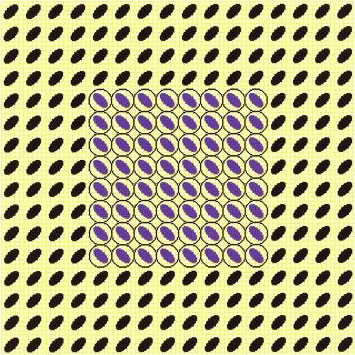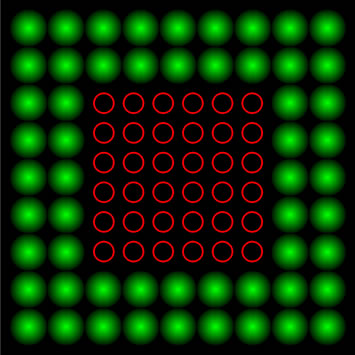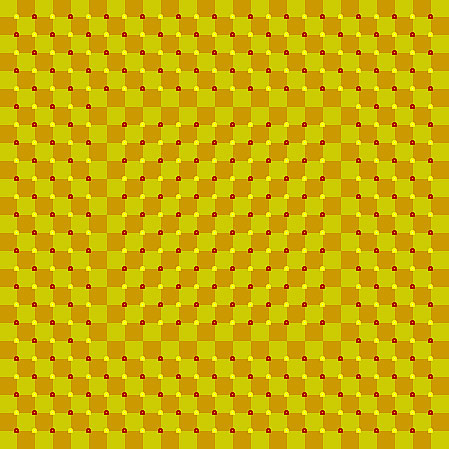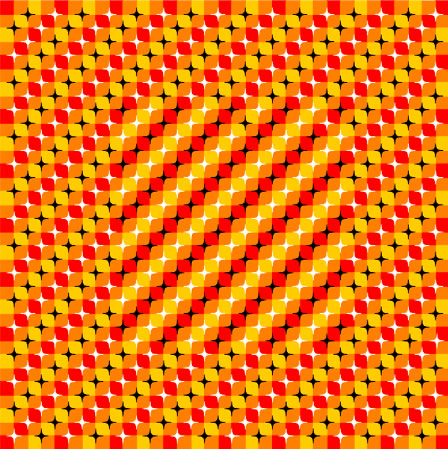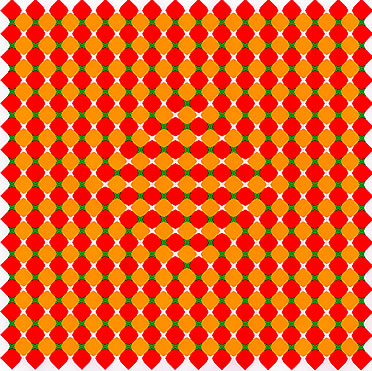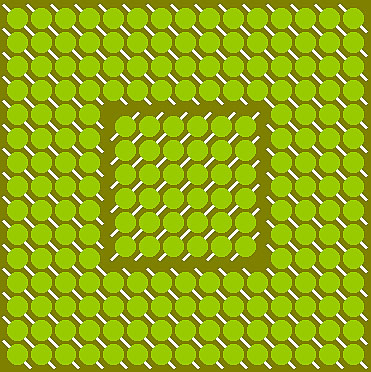Inset-surround version
The inset appears to move
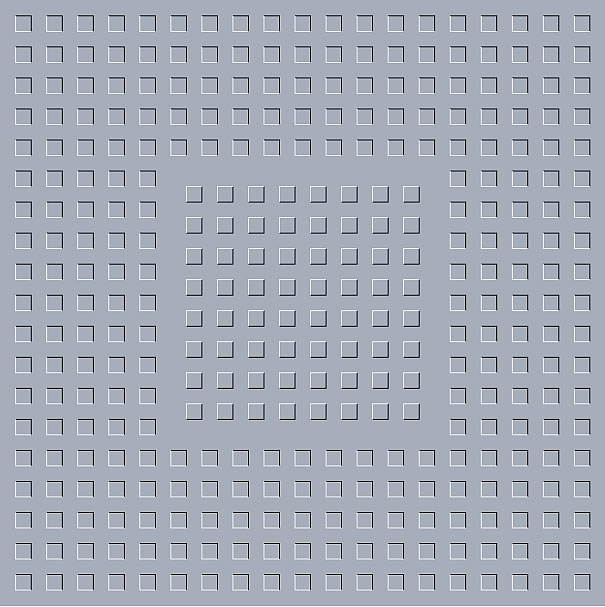 |
whereas in the surround the edge polarity is reversed. Black edges on the bottom and white on the top are common to all checks.
Apparent sliding motion similar to the Ouchi illusion can be clearly perceived when the pattern is moved about.
The effect is obtained also when the eye follows the tip of a pen moved horizontally or vertically across the pattern.
No sliding is seen with diagonal motion.
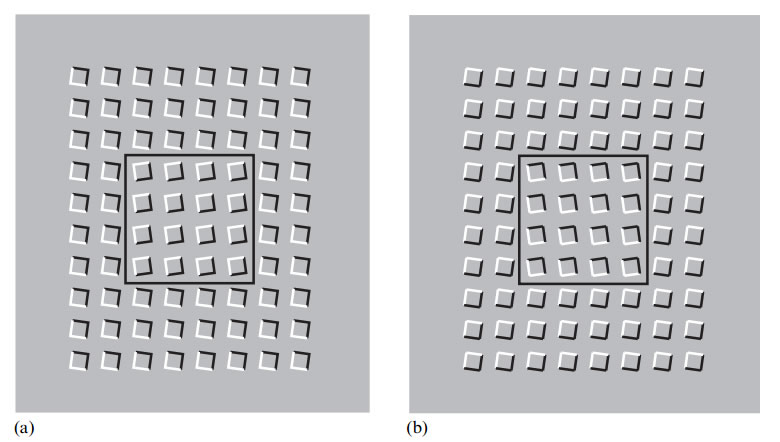 |
Accordingly, these regions have opposite implicit base-of-vertex orientations that are approximately at right angles (see text).
The apparent sliding motion in this pattern is stronger than in figure, but is limited to horizontal stimulus motion in (a) and vertical stimulus motion in (b). Note that the central square appears to float in front (a) or behind the surround (b), depending on polarity.
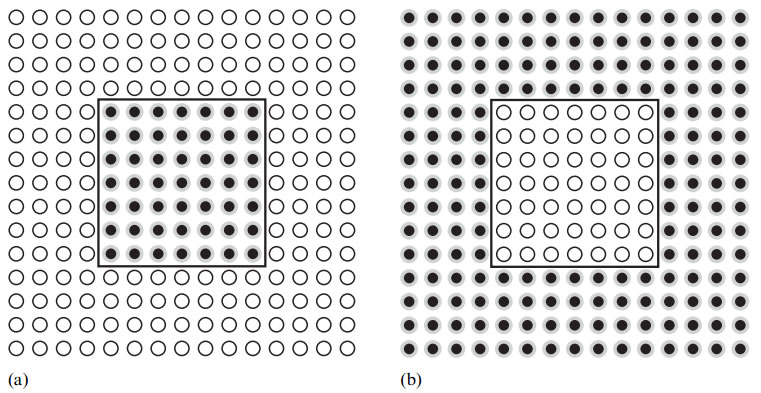 |
a directional motion bias of the elements. Yet it elicits vivid apparent sliding motion as well as strong segregation in depth.
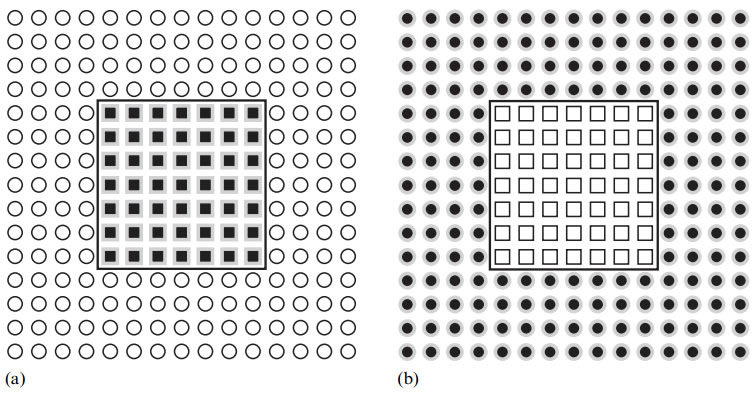 |
as a consequenceöthe strength of apparent sliding motion.
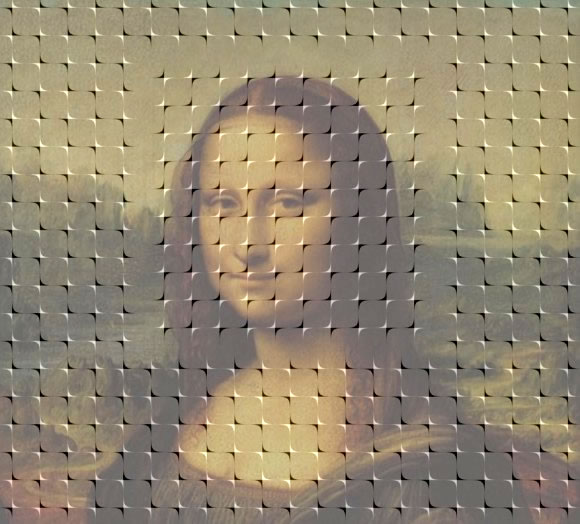 |
Try moving our eyes slowly over the image. Does that intensify the moving illusion?
© 2006 - 2017 · Mighty Optical Illusions
Copyright Keizo Shimizu 2004 |
|
|
|
©
Akiyoshi Kitaoka From:
Ritsumeikan University
|
|
|
©
Akiyoshi Kitaoka
Copyright Daniel Picon 2008
from Daniel Picon, Paris, France, November 30, 2008
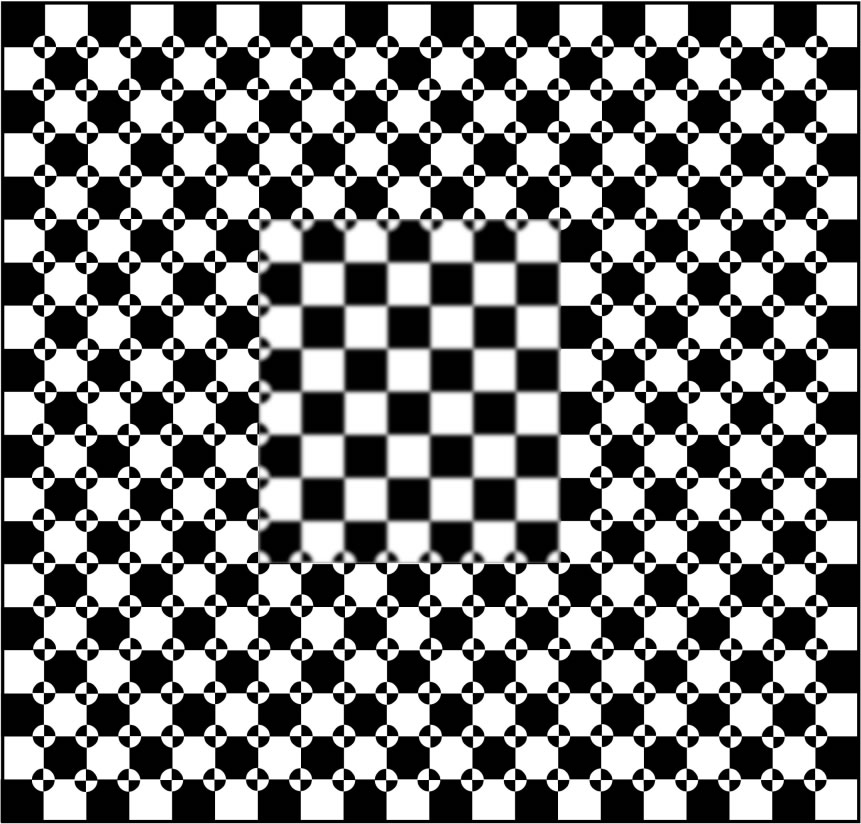 |
| |
Copyright Akiyoshi Kitaoka 2016
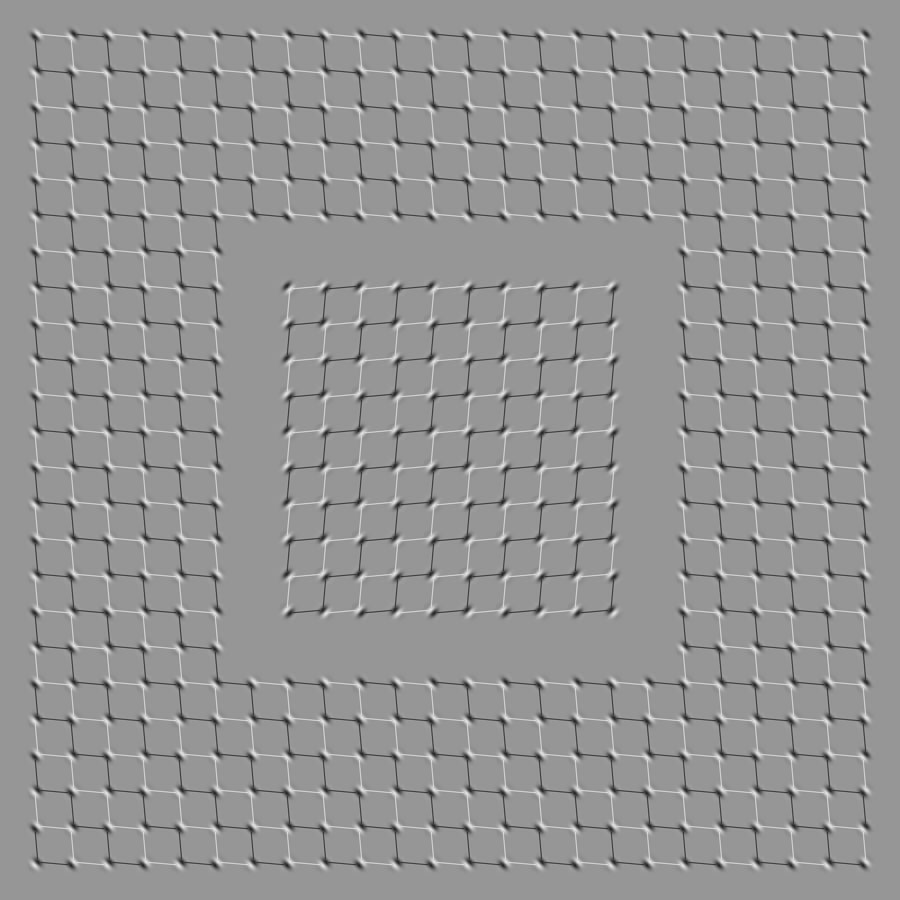 |
| Optical
Illusions REFERENCES: • Pinna, B. and Brelstaff, G. J. (2000) A new visual illusion of relative motion. Vision Research, 40, 2091-2096. • Pinna, B., & Gregory, R.L. (2002). Shifts of Edges and Deformations of Patterns. Perception, 31, 1503-1508. • Pinna B, Spillmann L. (2002) A new illusion of floating motion in depth. Perception, 31, 1501-1502. • Gurnsey, R., Sally, S. L., Potechin, C., and Mancini, S. (2002) Optimising the Pinna-Brelstaff illusion Perception, 31, 1275-1280 • Morgan M, ''Running rings around the brain'' The Guardian Thursday, 24 January 2002 • Anstis, S. M., & Rogers, B. J. (1975). Illusory reversal of visual depth and movement during changes of contrast. Vision Research, 15(8-9), 957-961. • Anstis, S. M., & Rogers, B. J. (1986). Illusory continuous motion from oscillating positive-negative patterns: Implications for motion perception. Perception, 15(5), 627-640. • Bayerl, P., & Neumann, H. (2002). Cortical mechanisms of processing visual flow - Insights from the Pinna-Brelstaff illusion. Proceedings of 4th Workshop Dynamische Perzeption, Bochum. • Spillmann L, Tulunay-Keesey U, Olson J, 1993 ``Apparent floating motion in normal and stabilised vision'' Investigative Ophthalmology & Visual Science 34(4) 1031, Abstract 1611 |
|
|
| Copyright
© 2004 ABC-people.com Design and conception BeStudio © 2018 |
